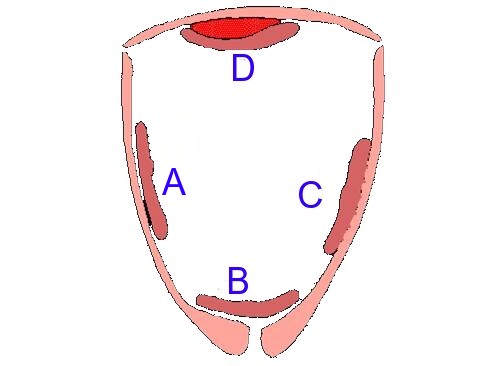The Placenta
Definition
An organ that connects the developing fetus to the uterine wall
Provides nutrition thermo-regulation to the fetus
Eliminates waste
Effects gas exchange via the mother's blood supply
Produce hormones to support pregnancy.
The placenta attaches to the wall of the uterus by the umbilical cord
The baby's umbilical cord develops from the placenta.
Structure
At full term the placenta is a discoid
Diameter 22 cm
2.5 cm thick
½ kg.
dark reddish-blue color
The umbilical cord inserts into the chorionic plate (has an eccentric attachment)
At birth it is separated from the uterine wall
30 minutes after delivery it is expelled from the uterine cavity.
Placental Circulation
On the maternal side, these villous tree structures are grouped into lobules called cotyledons.
On the foetal side vessels branch out over the surface of the placenta and further divide to form a network covered by a thin layer of cells. This results in the formation of villous tree structures.
Deoxygenated fetal blood passes through umbilical arteries to the placenta. At the junction of umbilical cord and placenta, the umbilical arteries branch radially to form chorionic arteries. Chorionic arteries, in turn, branch into cotyledon arteries. In the villi, these vessels eventually branch to form an extensive arterio-capillary-venous system, bringing the fetal blood extremely close to the maternal blood; but no intermingling of fetal and maternal blood occurs ("placental barrier").
Functions of the Placenta
Provide oxygen to the ferus
Provide immunity
Secrete hormones - human chorionic gonadotrophin HCG
Secrete hormones to sustain pregnancy
Secrete progesterone, oestrogen, human placental lactogen
Placental Barrier - to protect the foetus from the maternal immune system
Applied Anatomy
- Normal attachment
- Placenta previa
- Placenta accreta
- Accidental haemorrhage (Abruptio Placentae)
All the above illustrated in the diagram below:





